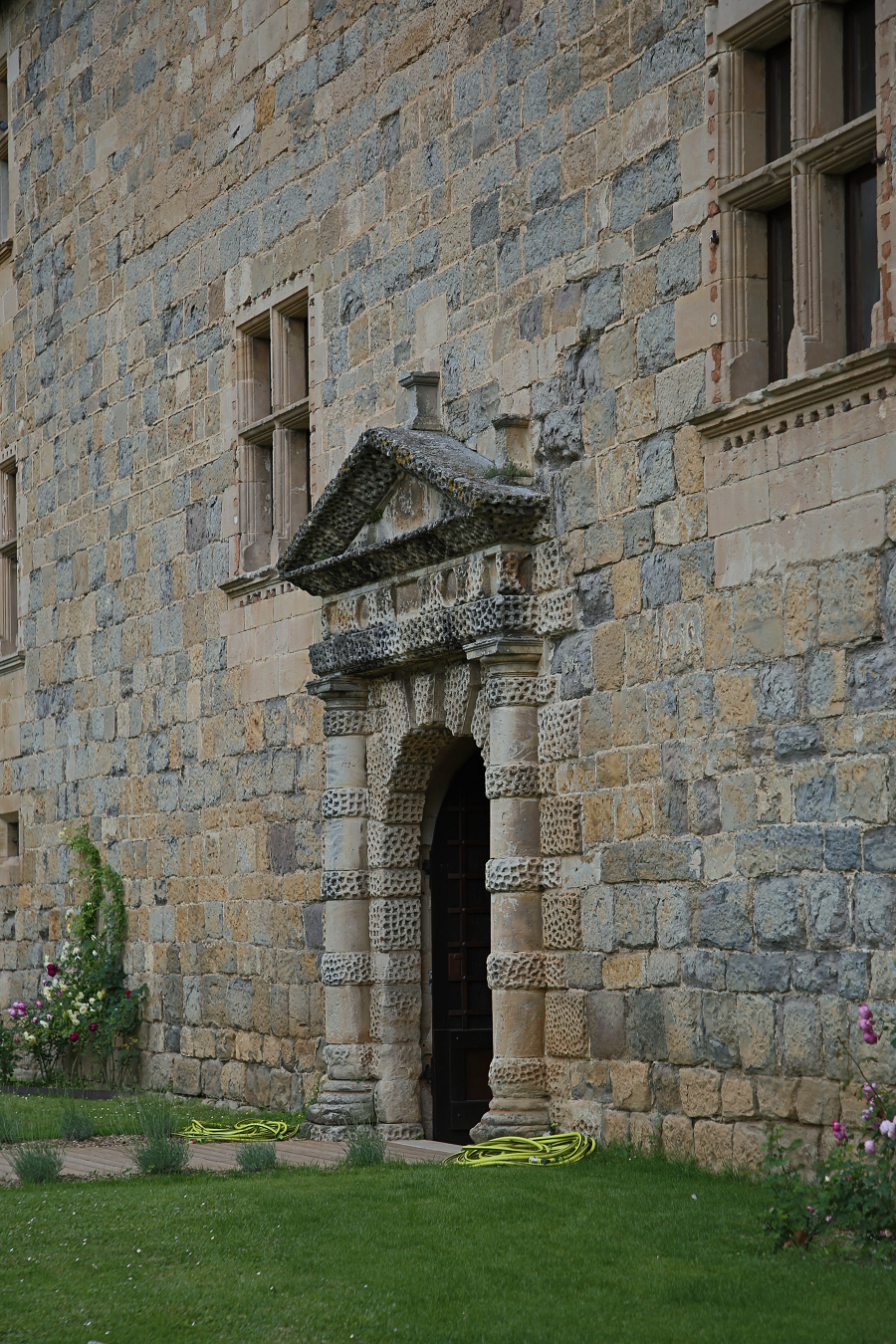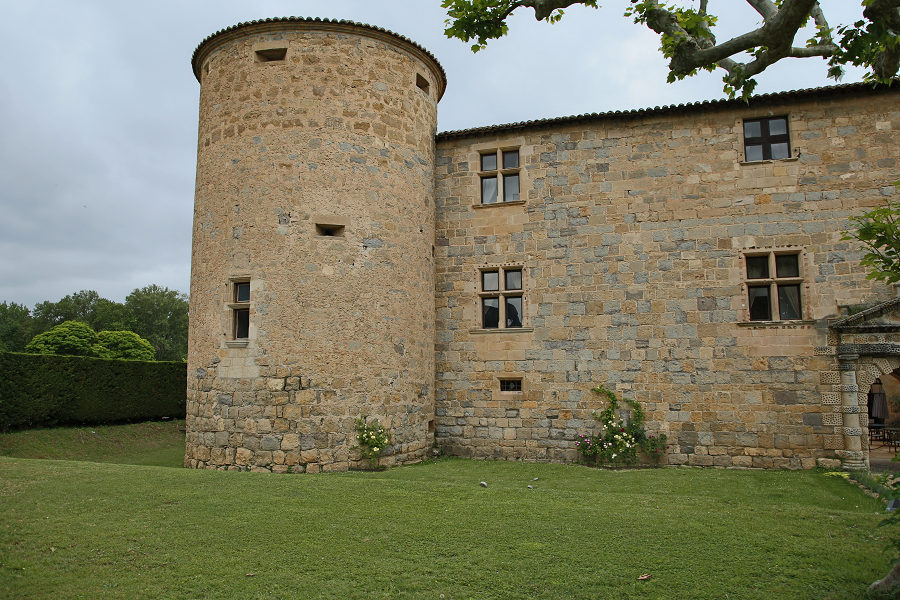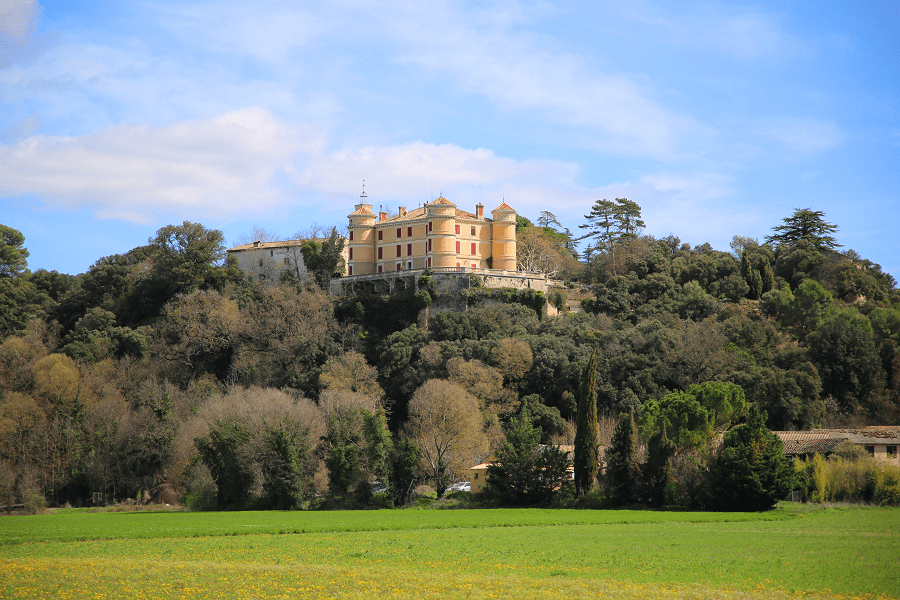De Joyeuse Duces’ castle (fr. Château des ducs de Joyeuse) or Couiza castle is located a few kilometers from the small town of Couiza, Aude department, approximately 40 km from Carcassonne, in the very heart of Haute-Vallée de l’Aude in the place where the rivers Sals and Aude join confluence (Pyrenees, France, Occitania).
This place is historically known as the land of the Cathars.
Couiza is a very old French town. Archaeological excavations show that there has been life in this place since the first century A.D. The origin of the town’s name probably comes from the Roman colonist Cusius.
The town has long been of strategic importance as it was on the way from Razès to Corbières.
The city was under the rule of the powerful Lagrasse Abbey which founded the Monastery of Strength (le Couvent de la Force) in the current church area.
Religious figures have strengthened the town for centuries. However, it developed somewhat more slowly compared to nearby towns.
Castle History
Francoise de Voisins married Jean de Joyeuse in 1518 and took Couiz, Couffoulens, Puivert and Latour-de-France in a dowry. Shortly after, Jean de Joyeuse became appointed as Narbonne’s governor. He pledged to build a magnificent residence in Couiz worthy of his high status.
The castle’s construction started in the year 1540.
Jean de Joyeuse left a will before his death, according to which the castle should be passed into the ownership of his son Jean-Paul to the detriment of his son Wilhelm, who was Bishop of Alet and could not continue his family. However, Jean-Paul died without inheriting anything.
Wilhelm renounced the rank of bishop in connection with these sad circumstances, got married, and entered the military service, becoming the owner of Couiza castle.
Wilhelm became a lieutenant general in Languedoc and took an active part in the battle with the Huguenots during the time of the religious wars (1562-1598). King Henry III (Henri III) appointed Wilhelm in 1582 as a Marshal of France for his courage.
The former Bishop of Alet and Marshal of France, Wilhelm de Joyeuse, died of the plague in Couiza castle in 1592, where he was buried. Wilhelm left all his possessions to his children and his widow Marie de Batarnay.
They sold the castle to Claude de Réhé, the nephew of the Archbishop of Narbonne in 1649.
The castle was declared a national treasure after the revolution and was used as a hospital for soldiers, then as a gendarmerie and, finally, as a hat factory’s warehouse.
The castle’s roof collapsed in 1928 and people abandoned the building completely. It began overgrown and derelict.
The castle was restored 50 years later.
There is a hotel and restaurant in the castle now.
How to get to?
From Paris: 8 hr 20 min (788 km) via A20
From Toulouse: 1 hr 34 min (114 km) via A61
From Andorra: 2 hr 24 min (122 km) via D613
From Barcelona: 3 hr 56 min (250 km) via C-16 and D118
From Madrid: 9 hr 1 min (769 km) via A-2
From Monaco: 5 hr 34 min (535 km) via A8 and A9
From Moscow: 39 hr (3,460 km) via E30/M1
From Belgrade: 18 hr 52 min (1,839 km) via E70
From Istanbul: 30 hr (2,788 km) via E70
From Bern: 8 hr 12 min (793 km) via A9
See here Pyrenees travel guide
See here France travel guide
See here Spain travel guide














